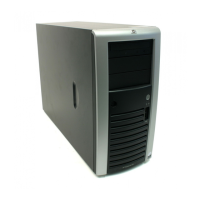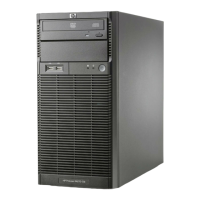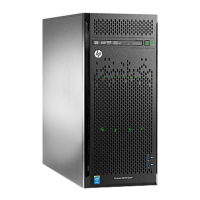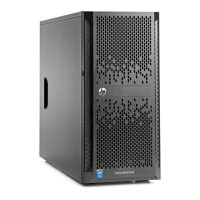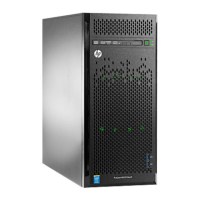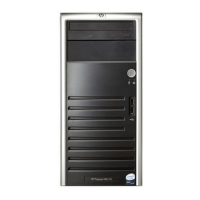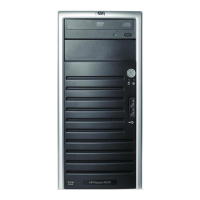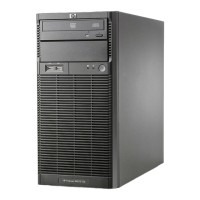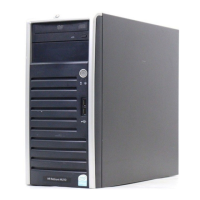Software and configuration utilities 48
intervention. During this process, the ORCA utility, in most cases, automatically configures the array to a
default setting based on the number of drives connected to the server.
NOTE: The server may not support all the following examples.
NOTE: If the boot drive is not empty or has been written to in the past, ORCA does not
automatically configure the array. You must run ORCA to configure the array settings.
Drives installed Drives used RAID level
1
2
2 RAID 1
3, 4, 5, or 6
3, 4, 5, or 6 RAID 5
More than 6
0 None
To change any ORCA default settings and override the auto-configuration process, press the F8 key when
prompted.
For more information on RBSU, see the HP ROM-Based Setup Utility User Guide on the Documentation CD or
the HP RBSU Information Library (http://www.hp.com/go/rbsu/docs).
Boot options
Near the end of the boot process, the boot options screen is displayed. This screen is visible for several
seconds before the system attempts to boot from a supported boot device. During this time, you can do the
following:
• Access RBSU by pressing the F9 key.
• Access the System Maintenance Menu (which enables you to launch ROM-based Diagnostics or
Inspect) by pressing the F10 key.
• Access the boot menu by pressing the F11 key.
• Force a PXE Network boot by pressing the F12 key.
Array Configuration Utility
ACU is a utility with the following features:
• Runs as a local application or remote service accessed through the HP System Management Homepage
• Supports online array capacity expansion, logical drive extension, assignment of online spares, and
RAID or stripe size migration
• Suggests the optimum configuration for an unconfigured system
• For supported controllers, provides access to licensed features, including:
o Moving and deleting individual logical volumes
o Advanced Capacity Expansion (SATA to SAS and SAS to SATA)
o Offline Split Mirror
o RAID 6 and RAID 60
o RAID 1 (ADM) and RAID 10 (ADM)
o HP Drive Erase
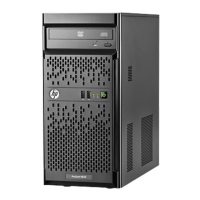
